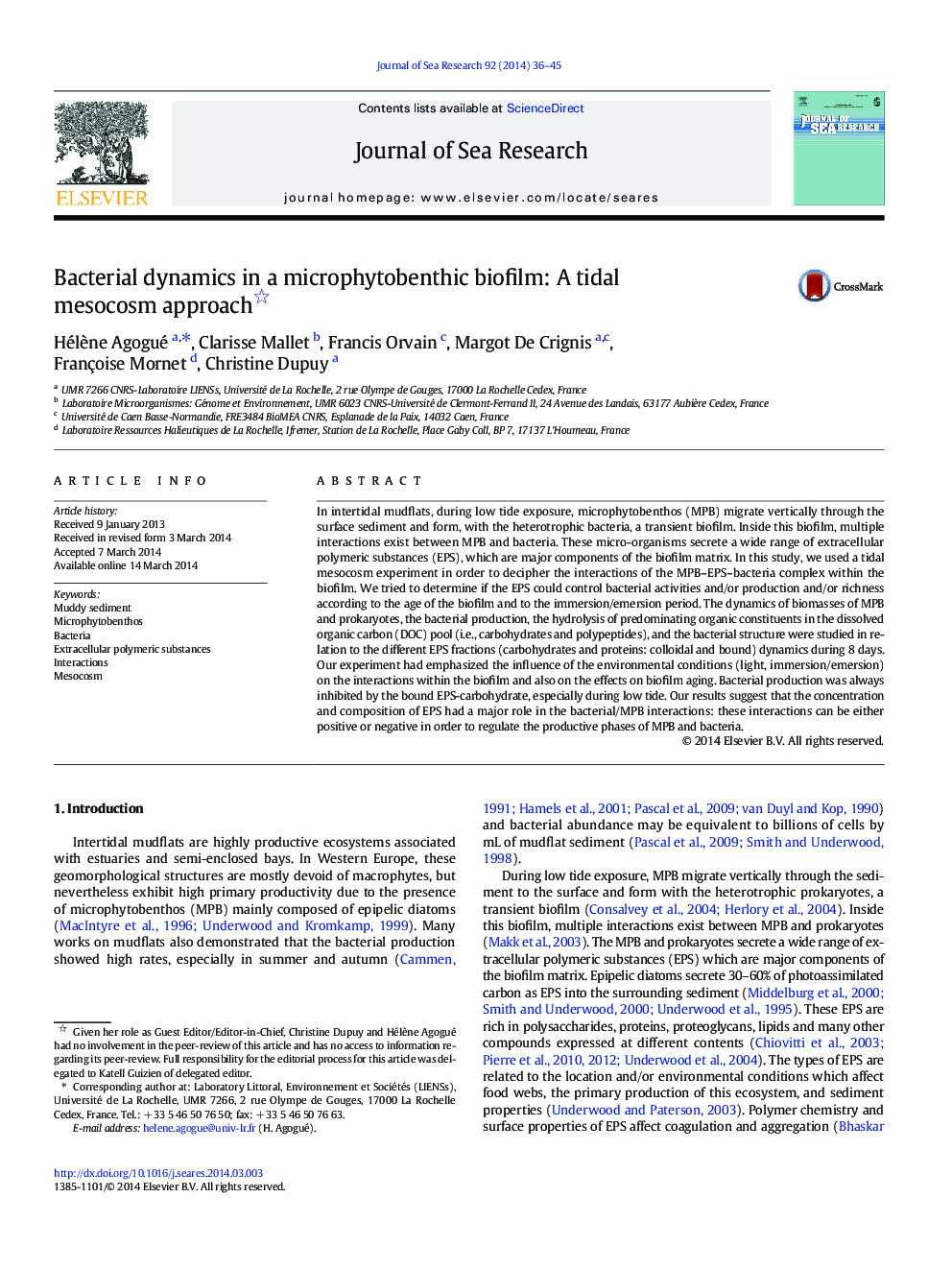| Article ID | Journal | Published Year | Pages | File Type |
|---|---|---|---|---|
| 6387308 | Journal of Sea Research | 2014 | 10 Pages |
â¢Composition of EPS has a major role in the bacterial/MPB interactions.â¢EPS are regulating the productive phase of MPB and bacteria.â¢EPS are controlling bacterial activities, production and richness.â¢Colloidal EPS proteins are favorable to the bacterial enzymatic activities.â¢Bacterial production is inhibited by EPS carbohydrates, especially during low tide.
In intertidal mudflats, during low tide exposure, microphytobenthos (MPB) migrate vertically through the surface sediment and form, with the heterotrophic bacteria, a transient biofilm. Inside this biofilm, multiple interactions exist between MPB and bacteria. These micro-organisms secrete a wide range of extracellular polymeric substances (EPS), which are major components of the biofilm matrix. In this study, we used a tidal mesocosm experiment in order to decipher the interactions of the MPB-EPS-bacteria complex within the biofilm. We tried to determine if the EPS could control bacterial activities and/or production and/or richness according to the age of the biofilm and to the immersion/emersion period. The dynamics of biomasses of MPB and prokaryotes, the bacterial production, the hydrolysis of predominating organic constituents in the dissolved organic carbon (DOC) pool (i.e., carbohydrates and polypeptides), and the bacterial structure were studied in relation to the different EPS fractions (carbohydrates and proteins: colloidal and bound) dynamics during 8Â days. Our experiment had emphasized the influence of the environmental conditions (light, immersion/emersion) on the interactions within the biofilm and also on the effects on biofilm aging. Bacterial production was always inhibited by the bound EPS-carbohydrate, especially during low tide. Our results suggest that the concentration and composition of EPS had a major role in the bacterial/MPB interactions: these interactions can be either positive or negative in order to regulate the productive phases of MPB and bacteria.
